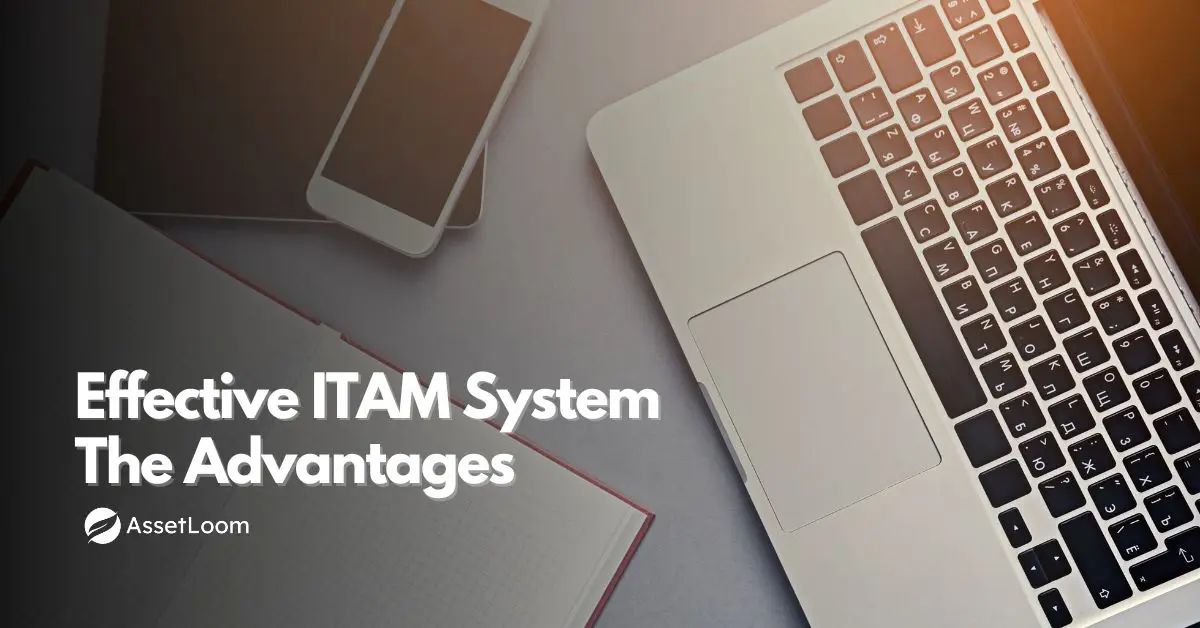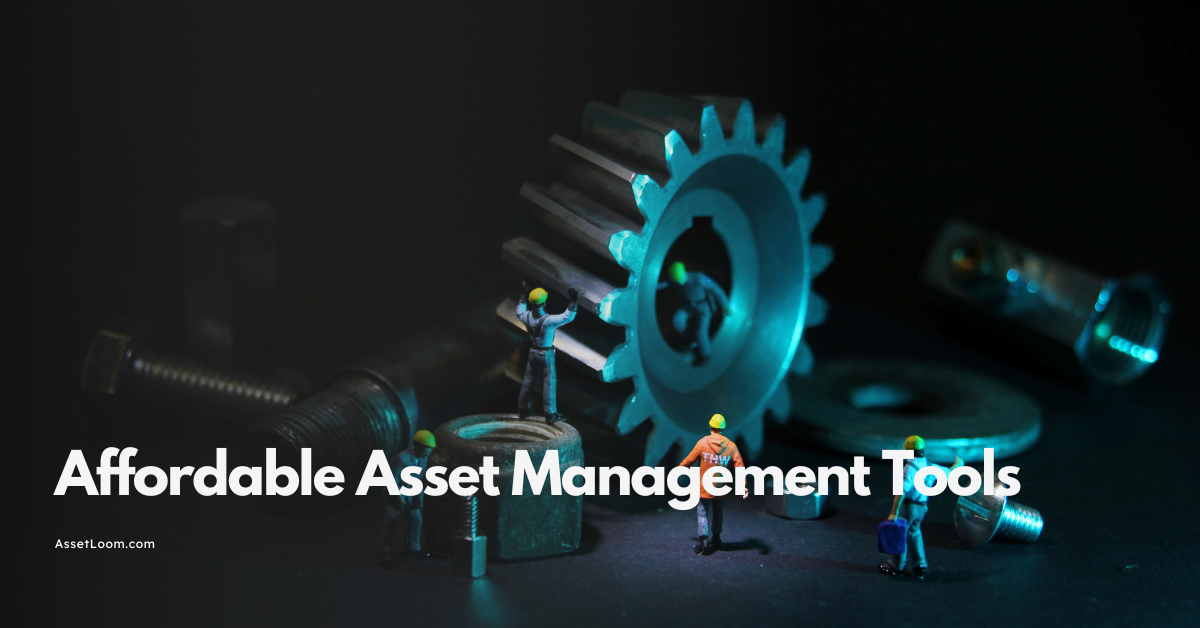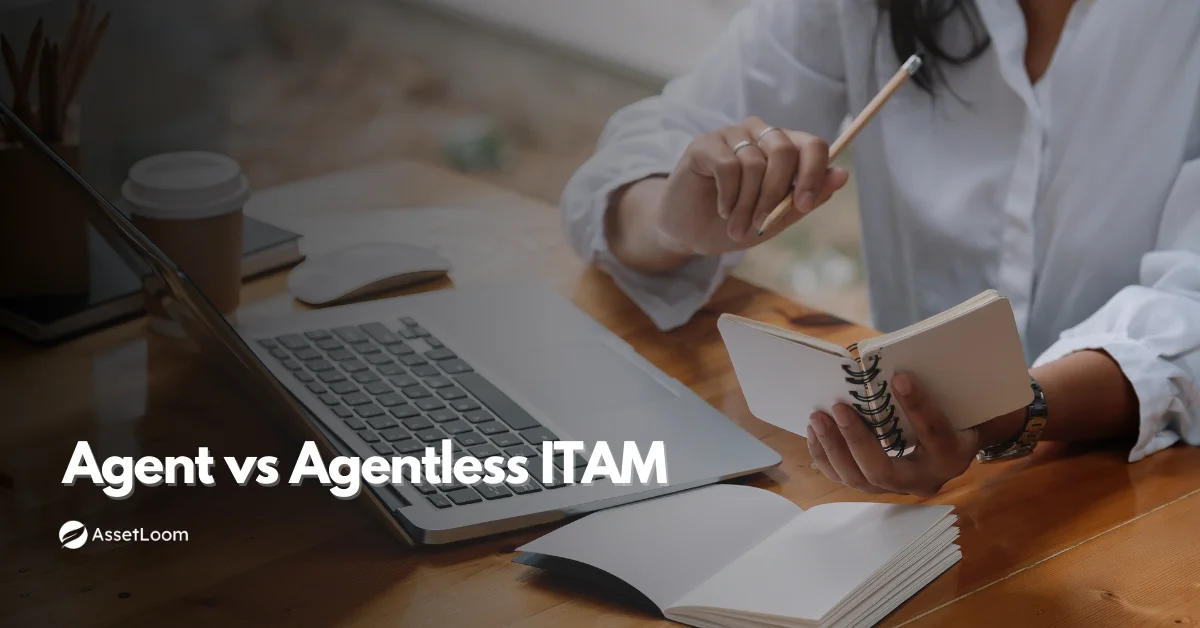What Is Asset Management IT Open Source?
Asset management IT open source: learn what it is, the benefits, whether it suits your business, and explore the top 5 tools for 2025.
In a world where software subscriptions can drain your IT budget faster than you can say “license renewal,” there’s a beacon of hope: asset management IT open source. These tools let you track hardware, software, and cloud resources without the hefty price tag or vendor lock-in. But what makes open source IT asset management so special, and is it the right fit for your organization? Let’s explore the ins and outs of open source IT asset management, its advantages, and the 5 best tools to streamline your operations in 2025.
What Is Asset Management IT Open Source?
Asset management IT open source refers to software solutions designed to track, manage, and optimize an organization’s IT assets, like computers and servers, software licenses, and even cloud resources, using open source technology. These tools provide a centralized platform to monitor asset lifecycles, ensure compliance, and streamline IT operations.
But what exactly does “open source” mean? Open source software is built on code that’s freely available to the public. Anyone can view, modify, or enhance it, which fosters collaboration among developers worldwide. Unlike proprietary software, which locks you into a vendor’s ecosystem and often comes with hefty licensing fees, open source IT asset management tools are typically free to use, with the option to customize them to fit your organization’s unique needs. This makes them particularly appealing for small to medium-sized enterprises (SMEs), startups, or even large organizations with tight budgets.
In the context of IT asset management, open source means you’re not just getting a tool, you’re gaining flexibility, transparency, and a community of contributors who continuously refine the software. For IT teams, this translates to solutions that evolve with your needs, without the constraints of vendor lock-in or unpredictable subscription costs.
Benefits of Open Source IT Asset Management Software
Choosing open source IT asset management software comes with a host of advantages that make it an attractive option for businesses. Here’s why it’s worth considering:
1. Cost-Effectiveness
The most obvious perk is the price tag, or lack thereof. Open source IT asset management tools are typically free to download and use, eliminating licensing fees that can eat into your IT budget. According to a 2020 IDC Study, organizations adopting open source solutions can save up to 60% compared to proprietary alternatives. Those savings can be redirected to other critical areas, like cybersecurity or employee training.
2. Customization and Flexibility
With access to the source code, your IT team (or a hired developer) can tailor the software to your specific workflows. Need a custom report for tracking software licenses? Want to integrate with your existing HR system? Open source IT asset management tools let you mold the software to fit your organization like a glove.
3. Community Support
Open source tools thrive on vibrant communities of developers and users who share updates, plugins, and troubleshooting tips. If you run into a problem, chances are someone in the community has already solved it. Comprehensive documentation and active forums make it easier to get started and resolve issues.
4. No Vendor Lock-In
Proprietary software often ties you to a single vendor, making it costly or difficult to switch. Open source ITAM gives you freedom. You control the software, the data, and the hosting, so you’re never at the mercy of a vendor’s pricing hikes or discontinued support.
Should You Choose Open Source IT Asset Management Software?
Open source IT asset management sounds like a dream, but is it right for your organization? The answer depends on your needs, resources, and technical expertise. Here’s a quick breakdown to help you decide:
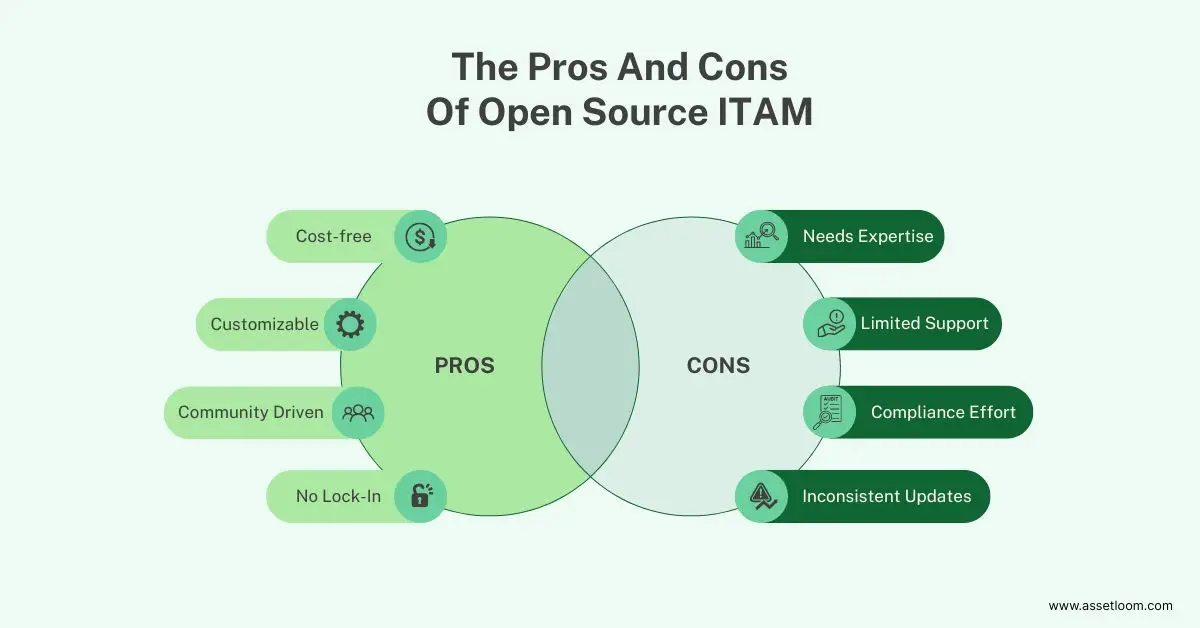
When Open Source ITAM Is a Great Fit
- Budget Constraints: If licensing fees for proprietary software are out of reach, open source is a cost-effective alternative.
- Technical Expertise: Organizations with in-house IT staff or access to developers can customize and maintain open source tools with ease.
- Customization Needs: If your workflows are unique or you need specific integrations, open source offers unmatched flexibility.
- Community-Oriented Mindset: If you’re comfortable relying on community support and documentation rather than dedicated vendor assistance, open source is ideal.
When to Think Twice
- Limited Technical Resources: Open source tools often require setup, configuration, and ongoing maintenance, which can be challenging without skilled IT staff.
- Need for Premium Support: If you prefer 24/7 customer service or guaranteed SLAs, proprietary software might be a better fit.
- Complex Compliance Requirements: While open source tools can be secure, ensuring compliance with strict regulations like GDPR or HIPAA may require additional effort.
Ultimately, open source IT asset management is a fantastic choice for organizations that value flexibility, cost savings, and control, but it’s not a one-size-fits-all solution. Assess your team’s capabilities and long-term goals before diving in.
Top 5 Most Popular Open Source IT Asset Management Software in 2025
Now that you’re sold on the idea of open source IT asset management, let’s explore the top 5 tools dominating the market in 2025. These solutions stand out for their features, ease of use, and active communities, based on recent reviews and industry insights.
1. Snipe-IT
Snipe-IT is a fan favorite for its user-friendly interface and robust asset tracking capabilities. It supports barcode scanning, QR code generation, and software license management, making it ideal for SMEs. With multi-language support and a REST API for integrations, Snipe-IT is versatile and easy to deploy.
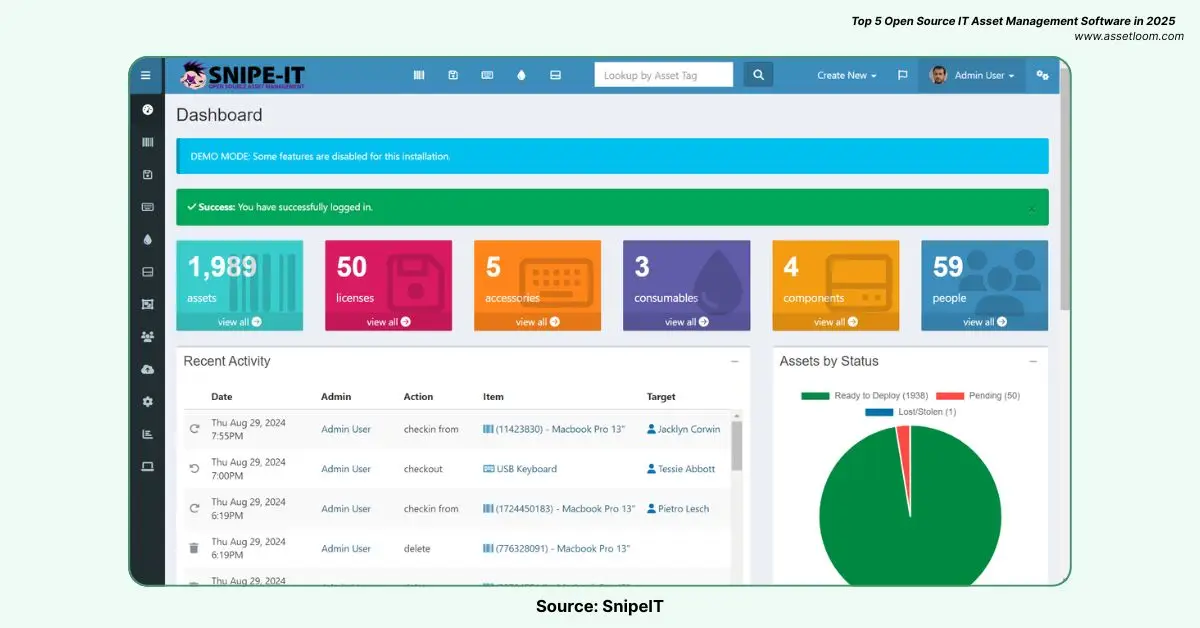
2. GLPI
GLPI combines ITAM with IT service management (ITSM), offering a comprehensive platform for asset tracking and incident management. Its plugin ecosystem and service desk functionality make it a go-to for IT support teams. GLPI earns high marks on Capterra (4.5/5) for its customization options, though some note a steep learning curve.
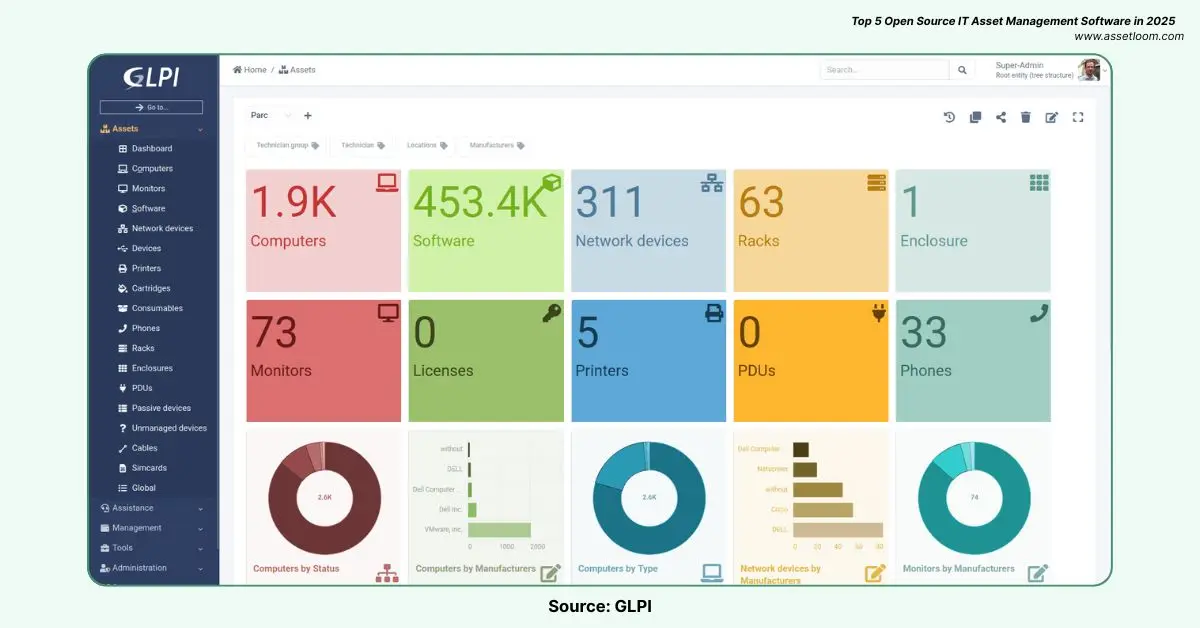
3. Ralph
Designed for data centers and backend environments, Ralph is lightweight yet powerful. It excels at tracking asset procurement, warranties, and lifecycles, with flexible workflows to match your processes. Its REST API and plugin support make it highly customizable.
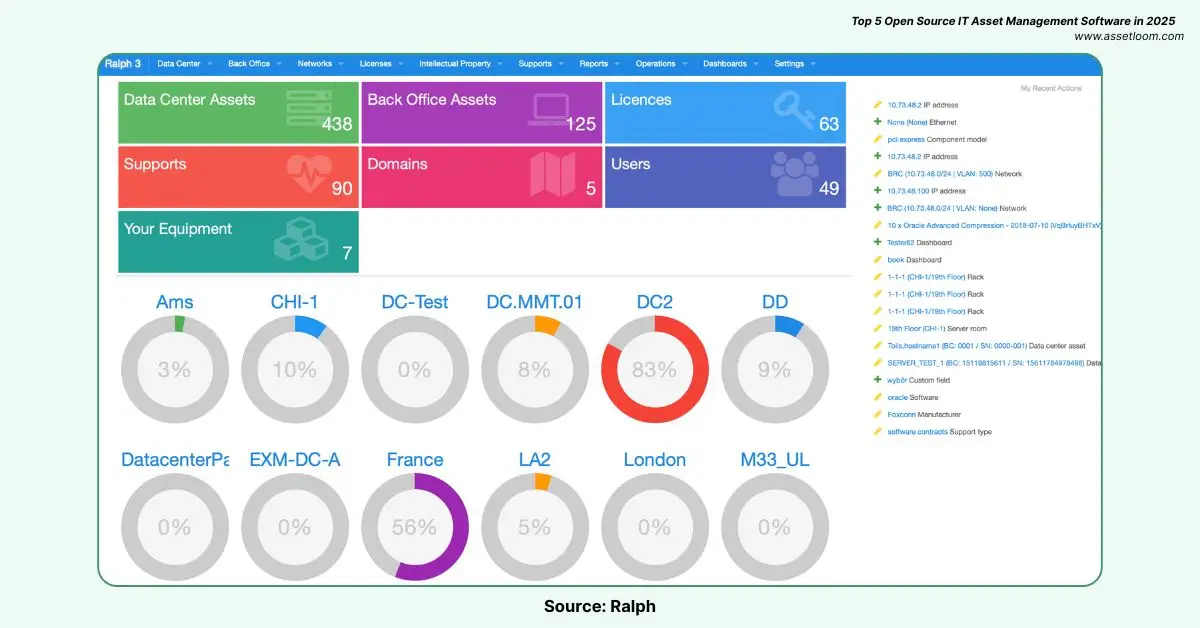
4. Spiceworks Inventory (On-Prem)
Though Spiceworks discontinued support for its on-premise version in 2021, it remains a free option for basic asset tracking. Its customizable dashboard and community support are highlights, but lack of updates makes it less viable for long-term use.
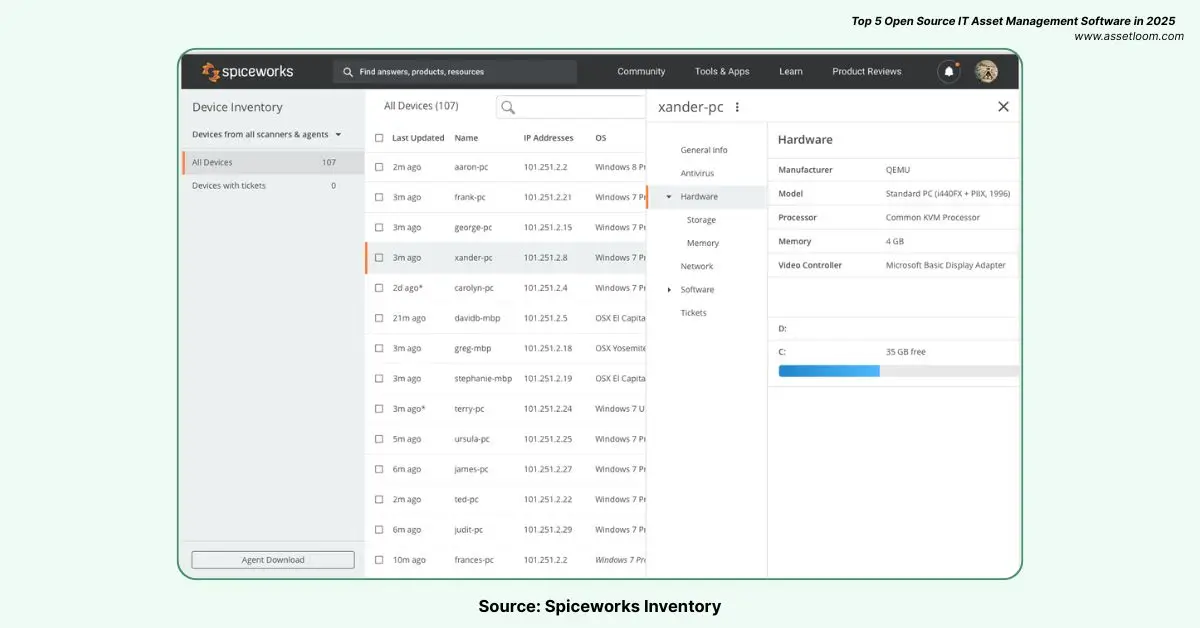
5. AssetTiger
AssetTiger offers a free plan for up to 250 assets, with features like barcode scanning and reporting. While not fully open source, its free tier and community-driven features make it a budget-friendly option for small businesses.
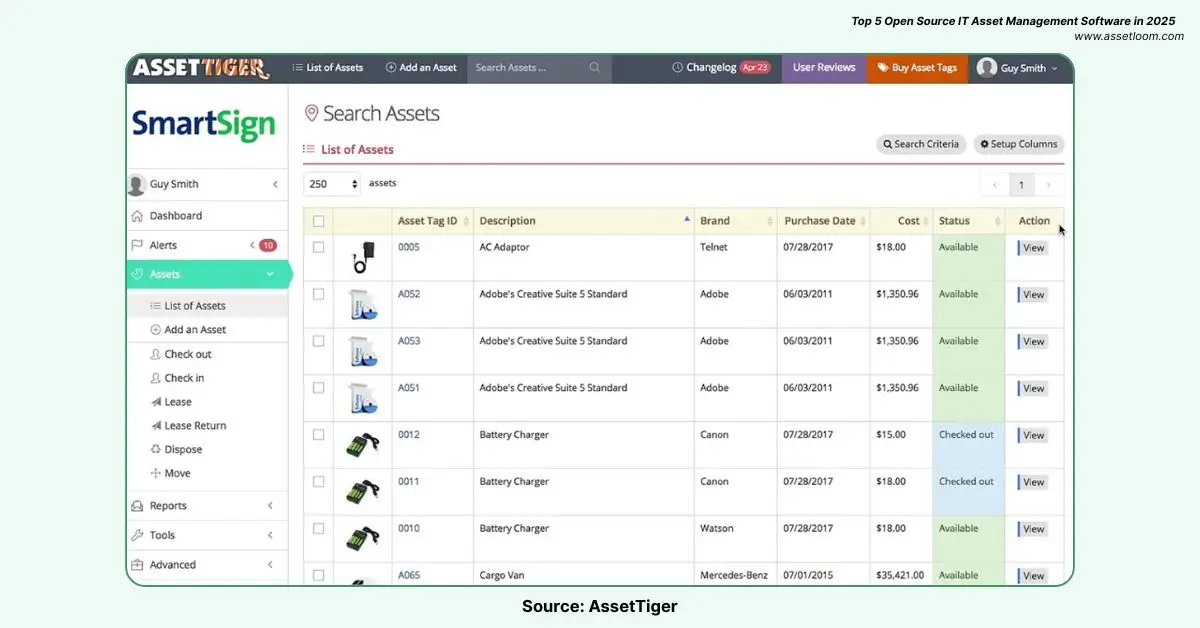
Final Thoughts
Open source IT asset management software offers a compelling blend of cost savings, flexibility, and community-driven innovation. For organizations willing to invest time in setup and customization, tools like Snipe-IT, GLPI, or Spiceworks can transform how you manage IT assets, delivering visibility and control without the hefty price tag. However, if your team lacks technical expertise or needs premium support, you might want to explore hybrid or proprietary options.

Subscribe for Expert Tips and Updates
Receive the latest news from AssetLoom. right in your inbox
